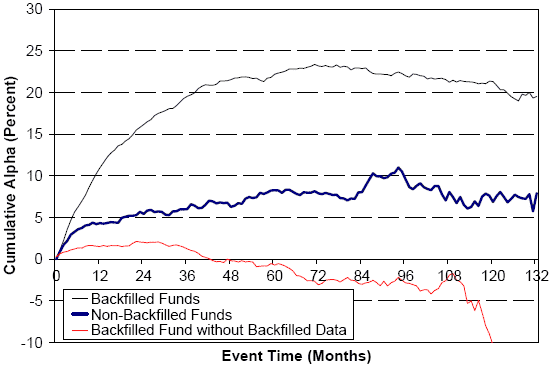Do strong incentives for new hedge fund managers and small-fund nimbleness translate to outperformance for new funds? In the January 2008 draft of their paper entitled “The Performance of Emerging Hedge Fund Managers”, Rajesh Aggarwal and Philippe Jorion analyze the performance of new hedge funds, emphasizing avoidance of backfill bias. New fund managers may at their discretion “back fill” past performance when they decide to start reporting fund performance. The authors account for the potential bias of favorable backfilling by assembling a sample of funds with inception dates within 180 days of first report dates. Using return data for the resulting sample of 923 (both live and dead) hedge funds that are new over the period 1996-2006, they conclude that:
- New hedge funds generate an average first-year, style-adjusted alpha of 4.31% that fades substantially during years two through five. New funds produce an average abnormal performance of 2.71% per annum during their first two years, but only 0.38% later.
- This effect is slightly stronger for larger funds.
- Controlling for fund size, new fund performance degrades by an average 0.48% per year during its early life.
- Early fund abnormal performance, for both leaders and laggards, persists up to five years.
- Backfill bias profoundly distorts measures of early fund performance, overstating returns by about 5% annually during the first three years and exaggerating indications of performance persistence. Since 37% of funds have more than two years of backfill, the common practice of ignoring the initial 12-24 months of reported fund performance fails to avoid backfill bias.
The following chart, taken from the paper, presents the cumulative abnormal performance of three equal-weighted portfolios of hedge funds aligned by months after first reported performance, as follows: (1) funds with no backfill (thick blue line), as defined above; (2) funds with backfill (thin gray line); and, (3) funds with backfill, but with the months prior to the first report date (the backfill period) eliminated (thin red line). The portfolio with no backfill shows early build up of alpha over the first few years, followed by less impressive subsequent performance. The difference in performance between the other two portfolios shows that backfill bias is substantial, roughly 4%-5% per year. A portfolio of backfilled funds that includes the backfilled period gives a very unrealistic view of new fund performance.

In summary, hedge funds that are truly new offer investors notable average outperformance for the first couple of years. However, funds that back fill prior performance data when they first start reporting appear to have already “used up” their startup alpha.
Perhaps funds that have a remarkably lucky unpublicized start are those those that back fill. And, perhaps hedge funds need to reinvent their alpha generators every two years.